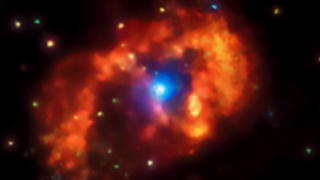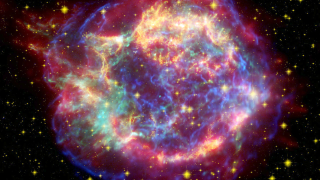Universe
ID: 14170
A study using 12 years of data from NASA’s Fermi Gamma-ray Space Telescope confirms that one supernova remnant is producing some of the highest-energy protons in our galaxy.
Theorists say the highest-energy cosmic ray protons in the Milky Way reach a million billion electron volts, or petaelectronvolt (PeV) energies. But the precise nature of their sources, which astronomers call PeVatrons, has been difficult to pin down.
Fermi has shown that the shock waves of exploded stars boost particles to speeds comparable to that of light. Called cosmic rays, these particles mostly take the form of protons, but can include atomic nuclei and electrons. Because they all carry an electric charge, their paths become scrambled as they whisk through our galaxy’s magnetic field, which masks their origins. But when these particles collide with interstellar gas near the supernova remnant, they produce a tell-tale glow in gamma rays — the highest-energy light there is.
Out of about 300 known supernova remnants, only a few have been found to emit gamma rays at energies high enough to potentially be PeVatrons. One is G106.3+2.7, a comet-shaped cloud located about 2,600 light-years away in the constellation Cepheus. A bright pulsar caps the northern end of the supernova remnant, and astronomers think both objects formed in the same explosion.
Fermi and ground-based gamma-ray observatories have detected billion- (GeV) and trillion-electron-volt (TeV) gamma rays in the tail of the remnant, away from the pulsar. By combining 12 years of Fermi observations, astronomers were able to confirm that the highest-energy gamma rays coming from the remnant must be the result of protons boosted to PeV energies — meaning that G106.3+2.7 is a PeVatron.
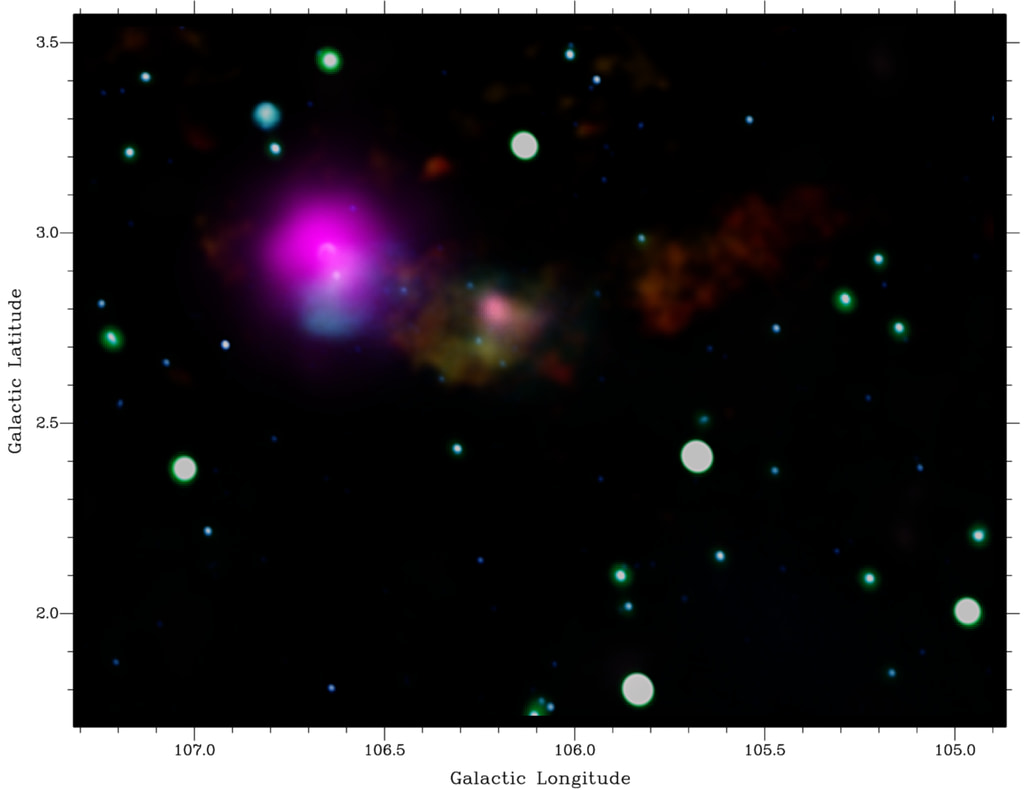
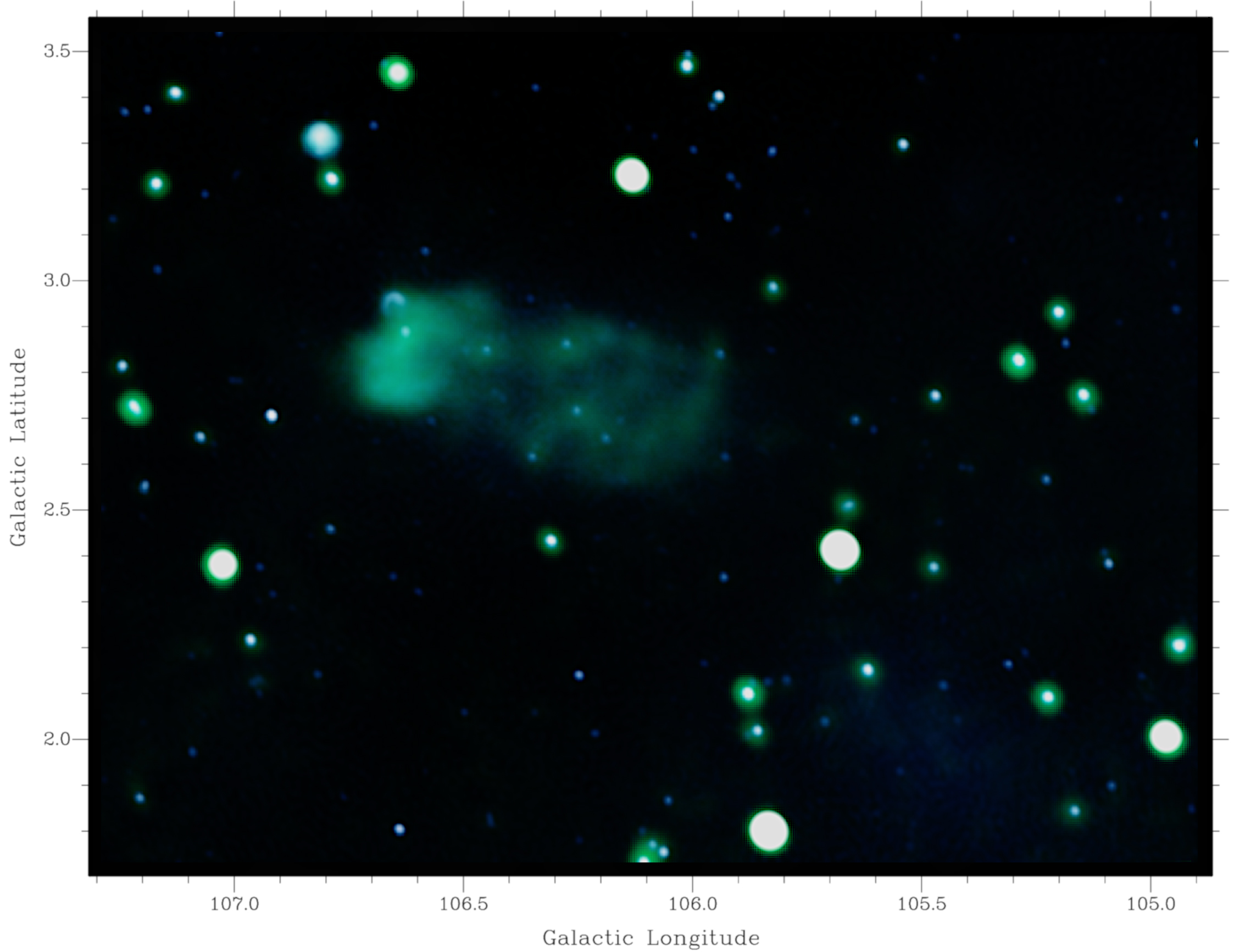
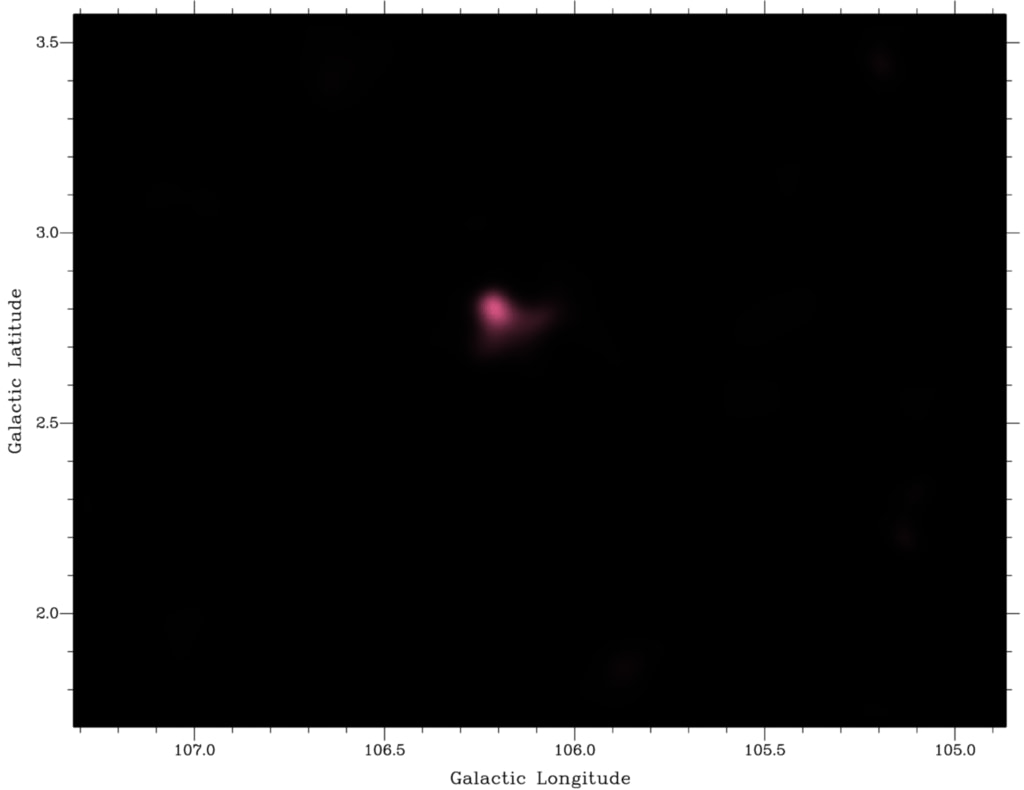
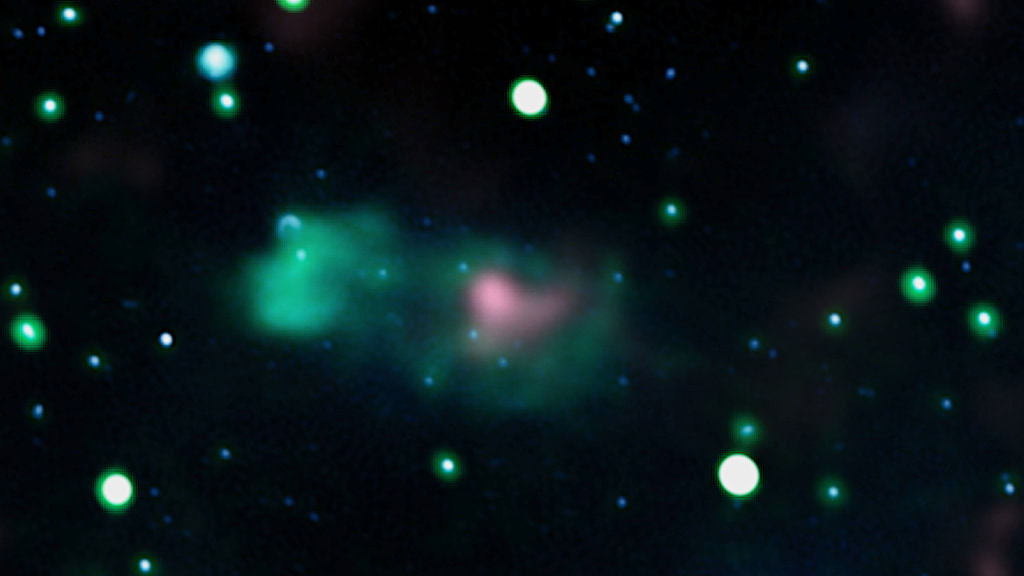

NASA’s Fermi Confirms 'PeVatron' Supernova Remnant
Theorists say the highest-energy cosmic ray protons in the Milky Way reach a million billion electron volts, or petaelectronvolt (PeV) energies. But the precise nature of their sources, which astronomers call PeVatrons, has been difficult to pin down.
Fermi has shown that the shock waves of exploded stars boost particles to speeds comparable to that of light. Called cosmic rays, these particles mostly take the form of protons, but can include atomic nuclei and electrons. Because they all carry an electric charge, their paths become scrambled as they whisk through our galaxy’s magnetic field, which masks their origins. But when these particles collide with interstellar gas near the supernova remnant, they produce a tell-tale glow in gamma rays — the highest-energy light there is.
Out of about 300 known supernova remnants, only a few have been found to emit gamma rays at energies high enough to potentially be PeVatrons. One is G106.3+2.7, a comet-shaped cloud located about 2,600 light-years away in the constellation Cepheus. A bright pulsar caps the northern end of the supernova remnant, and astronomers think both objects formed in the same explosion.
Fermi and ground-based gamma-ray observatories have detected billion- (GeV) and trillion-electron-volt (TeV) gamma rays in the tail of the remnant, away from the pulsar. By combining 12 years of Fermi observations, astronomers were able to confirm that the highest-energy gamma rays coming from the remnant must be the result of protons boosted to PeV energies — meaning that G106.3+2.7 is a PeVatron.





Related
For More Information
Credits
Sophia Roberts (Advocates in Manpower Management, Inc.): Lead Producer
Francis Reddy (University of Maryland College Park): Lead Science Writer
Ke Fang (University of Wisconsin-Madison): Lead Scientist
Jayanne English (University of Manitoba): Scientist
Henrike Fleischhack (Catholic University of America): Scientist
Aaron E. Lepsch (ADNET Systems, Inc.): Technical Support
Francis Reddy (University of Maryland College Park): Lead Science Writer
Ke Fang (University of Wisconsin-Madison): Lead Scientist
Jayanne English (University of Manitoba): Scientist
Henrike Fleischhack (Catholic University of America): Scientist
Aaron E. Lepsch (ADNET Systems, Inc.): Technical Support
Please give credit for this item to:
NASA's Goddard Space Flight Center. However, individual items should be credited as indicated above.
NASA's Goddard Space Flight Center. However, individual items should be credited as indicated above.
Science Paper:
Evidence for PeV Proton Acceleration from Fermi-LAT Observations of SNR G106.3+2.7
Short URL to share this page:
https://svs.gsfc.nasa.gov/14170
Mission:
Fermi Gamma-ray Space Telescope
This item is part of these series:
Narrated Movies
Astrophysics Stills
Astrophysics Features
Keywords:
SVS >> HDTV
SVS >> Neutron Star
SVS >> Astrophysics
SVS >> Universe
SVS >> Pulsar
SVS >> Supernova
SVS >> Radio Telescope
NASA Science >> Universe
SVS >> Gamma Ray
Evidence for PeV Proton Acceleration from Fermi-LAT Observations of SNR G106.3+2.7
Short URL to share this page:
https://svs.gsfc.nasa.gov/14170
Mission:
Fermi Gamma-ray Space Telescope
This item is part of these series:
Narrated Movies
Astrophysics Stills
Astrophysics Features
Keywords:
SVS >> HDTV
SVS >> Neutron Star
SVS >> Astrophysics
SVS >> Universe
SVS >> Pulsar
SVS >> Supernova
SVS >> Radio Telescope
NASA Science >> Universe
SVS >> Gamma Ray
